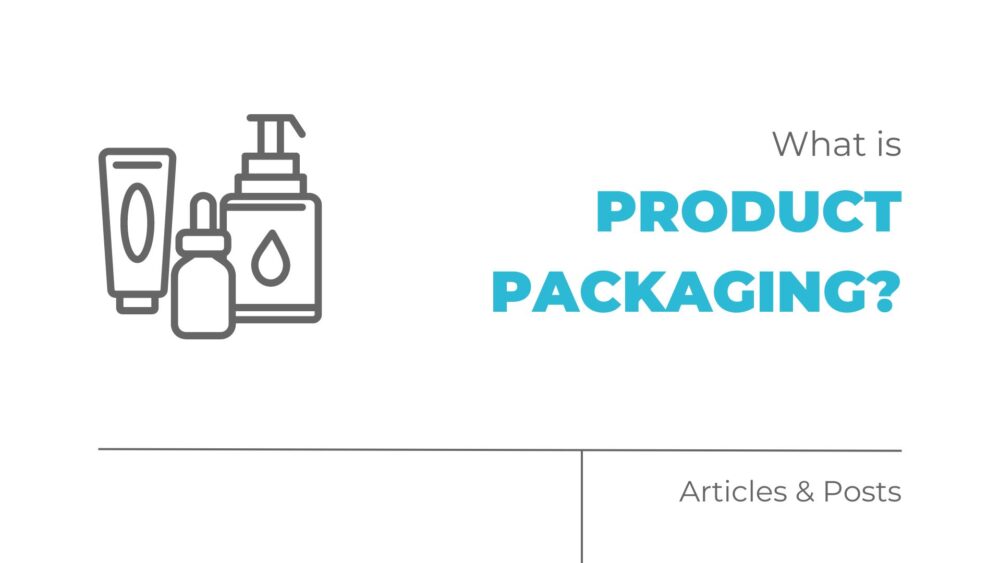Welcome to the world of large-scale business and branding!
Product packaging design isn’t just a necessity.
It’s a canvas for creativity and a powerful tool for leaving a lasting impression on customers.
What is product packaging?
Product packaging is the art and science of designing and creating containers or wrappers for products, serving to protect, inform, and attract consumers while also reflecting the brand’s identity and values.
Think of it as the stylish outfit your product wears before meeting its new owner.
It’s not just about protection; it’s about making a memorable first impression, conveying your brand’s story, and adding value to the customer experience.
What is the Function of Product Packaging?
Product packaging serves several vital functions beyond merely holding your product. Let’s delve into some of these key roles:
Protection:
First and foremost, packaging safeguards your product during transit and storage.
Whether it’s bouncing around in a delivery truck or sitting on a store shelf, sturdy packaging ensures your item arrives intact and pristine.
Brand Identity:
Your packaging is an extension of your brand.
It’s the first thing customers see, so it should reflect your brand’s personality and values.
Consistent branding builds recognition and trust, setting you apart from competitors.
Information:
Packaging communicates essential details about your product, such as ingredients, usage instructions, and safety warnings.
Clear, concise information helps customers make informed purchasing decisions.
Marketing:
Effective packaging is like a silent salesperson, enticing customers to pick up your product.
Eye-catching designs, clever copywriting, and strategic placement can all influence purchasing behavior.
What are the Rules of Product Packaging?
When it comes to packaging, there are a few fundamental rules to keep in mind:
- Know Your Audience: Understand who your target customers are and tailor your packaging to appeal to their tastes and preferences.
- Keep it Simple: Cluttered packaging can overwhelm consumers. Stick to clean, minimalist designs that highlight the most important information.
- Ensure Functionality: While aesthetics are important, don’t sacrifice functionality for beauty. Your packaging should be practical and easy to use.
- Stay True to Your Brand: Consistency is key. Your packaging should align with your brand’s visual identity and messaging across all platforms.
What are the Four Elements of Product Packaging?
Successful product packaging typically incorporates four essential elements:
- Material: Choose packaging materials that not only protect your product but also reflect your brand’s values. For example, eco-conscious brands might opt for biodegradable or recyclable materials.
- Design: Invest in compelling visuals that capture attention and convey your brand’s story. Consider hiring a professional designer to create a cohesive and visually appealing package.
- Typography: Select fonts that are legible and align with your brand’s tone and personality. Play with typography to emphasize important information and create visual interest.
- Functionality: Ensure your packaging is practical and user-friendly. Can customers easily open it? Is it suitable for display on store shelves? Consider how your packaging will be used in real-world scenarios.
How do You Create a Product Packaging?
Now that you understand the importance of product packaging, let’s explore how to create one that wows your customers:
- Research: Study your competitors’ packaging to identify trends and gaps in the market. Gather feedback from potential customers to understand their preferences.
- Define Your Brand: Clarify your brand’s identity, values, and target audience. Use this information to guide your packaging design decisions.
- Conceptualize: Brainstorm packaging concepts that align with your brand and resonate with your audience. Consider elements like color, imagery, and messaging.
- Prototype: Create mock-ups or prototypes of your packaging designs to visualize how they will look in real life. Test different materials and finishes to find the perfect combination.
- Refine: Solicit feedback from friends, family, and potential customers. Iterate on your designs based on their input until you’re confident you’ve created a packaging solution that’s both functional and visually stunning.
Remember, your product packaging is more than just a box or a label—it’s an opportunity to make a lasting impression and build brand loyalty.
This is essential for large and small businesses alike.
Invest the time and effort to get it right, and you’ll set your small business up for success in the competitive marketplace.
By investing in captivating graphic design for product packaging, premium materials, and innovative solutions, you can elevate your packaging to new heights and leave a lasting mark on customers – whether regionally in a city like Atlanta, or around the globe.


Comments are closed.